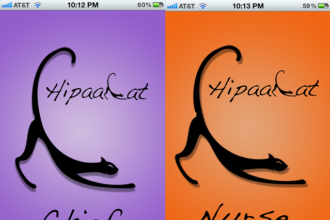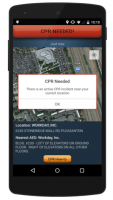Have you ever wished that instead of choosing a single answer on a multiple choice exam you could write an essay instead to show how you are thinking about the question? It happened to me many times, particularly on my medical board exams, where the object seemed more to guess what the question writers were thinking than to get at the depth of my knowledge. And even though each question typically had a menu of 5 possible answers, the message was binary: right vs.wrong. There was never room for anything between these two extremes.
Have you ever wished that instead of choosing a single answer on a multiple choice exam you could write an essay instead to show how you are thinking about the question? It happened to me many times, particularly on my medical board exams, where the object seemed more to guess what the question writers were thinking than to get at the depth of my knowledge. And even though each question typically had a menu of 5 possible answers, the message was binary: right vs.wrong. There was never room for anything between these two extremes. Yet this middle ground is where most of our lives take place.
This “yes/no” is a digital philosophy, where strings of 0s and 1s act as switches for the information that runs our world. These answers are easily quantifiable because they are easily counted. But what are we quantifying? What are we counting? Has the proliferation of easily quantifiable standardized testing led us to more and deeper knowledge? I think we all know the answer to that question. Yet are heading in the same direction with electronic medical data? Let me explain what I mean.
There was an interesting discussion yesterday on a listserv I am a part of about structured vs. unstructured (narrative) clinical data. I don’t often jump into these discussions (believe it or not), but this time I had to make my views heard, because I believe they are similar to the views of many clinicians.
My understanding of one of the comments was that the narrative portions of the medical record are less valuable, since they are more difficult to digitize, and, therefore, do not represent data per se. The narrative, it was stated, serves more as a memory and communication aid for the clinician, and furthermore it frequently misses patient perspective. Right or wrong, what I walked away with is that “narrative parts of the record are not as valuable as the structured parts.”
I responded:
Isn’t the point of the narration to synthesize the structured data into a coherent whole that feeds into the subsequent plan? I completely agree that the patient perspective is often missing, but the two are not mutually exclusive. In fact, I see the synthesis of both narratives giving rise to most valuable interpretation and channeling of the “objective” data. When I was in practice, I often had patients referred to me in consultation for lung issues. And while the S and O parts of the SOAP note (Subjective, Objective, Assessment, Plan) lent themselves relatively naturally to structured data, the A and P parts really did not. In the A I waxed poetic about how the S and the O fit together for me and why (why I thought that diagnosis X was more likely than diagnosis Y), and in the P I discussed why I was making the recommendations I was making. And while… this was a way to communicate with other docs and to jog my memory about the patient when I saw him/her next, this was the most valuable part for me, since it had already contained the cognitive piece of the process. And yet this was the part that was most challenging to fit into a predetermined structure of a EMR. The richness of patient participation would come in a dialogue between clinicians and their patients, which I still think requires a narrative, no? And then someone else piped in and talked about two-dimensional holes being forced to hold the multidimensionality of our health and being, and the disruption that this represents. And I have to say this is exactly my recollection of my interactions with the (very early) EMR that my group adopted. I had loved to sit and write my SOAPs by hand, even the S and the O, but especially the A and the P. There was something about the process that solidified and imprinted for me the particular patient. The printed dictation was secondary to that somehow, and I always tended to refer to my hand-written note. This is how I knew my patients. That was slow medicine.
Perhaps this was a byproduct of how I grew up — largely analog, not anywhere near as digital as the younger generations, and much more inclined to put my thoughts on paper through the interaction of my brain, hand and pen. Strangely, today I have a hard time writing by hand, and my preferred method is to type on my keyboard. So, perhaps some brain rewiring has taken place. All I can say is this: for me the act of writing down my thoughts about the patient made the encounter real and memorable. Even more, I think it lent a certain level of respect to the individuality of each encounter. It is possible that if I were in practice today, I could achieve the same by typing my note.
But the writing medium is somewhat separate from “structured vs. unstructured” data. The “ideal” structured record is all about yes/no checkboxes. Having to fit our analog thoughts into such limited and limiting digital environment is distracting. And a lot of data from brain science suggest that it takes us a while to get back to the same level of focus on a task or a thought once we have been distracted. A clinical encounter is woefully brief, and these distractions can and do reduce its efficiency and integrity.
As a health services researcher, I rely on digital data for my work. Yet as a clinician I railed against it, as many clinicians continue to do today. Is the answer to abandon all electronic pursuits? Of course not. But I am baffled by the attitude that it is clinicians’ duty to adapt to the digital way of thinking rather than the other way around. There does not seem to be a recognition that the purpose and meaning of a clinical record is different to a clinician from what it is to a researcher or a policy maker. Yet the current EMR development seems to focus on the latter two constituencies virtually ignoring the clinical setting. Given our vastly improved computing capabilities over the last decade, why does a clinician still have to think like a computer? Moreover, if medicine is indeed a mix of art and science, do we really want our doctors to fit strictly into the digital model?
I believe that it is a lazy way out for developers. They are the ones that need to step up and create an electronic record that does not gratuitously disrupt the clinical encounter. This record needs to fit the work flow of clinical medicine like a glove. We cannot wait for some miracle to come along and magically transform our sick healthcare system. Today’s EMR will not succeed unless it takes into account the art of medicine. The narrative parts of the record must be preserved and enriched by patient collaboration, not eliminated in the interest of easy bean counting. Because several smart people tell us that “not everything that counts can be counted, and not everything that can be counted counts.” It’s time to pay attention.







